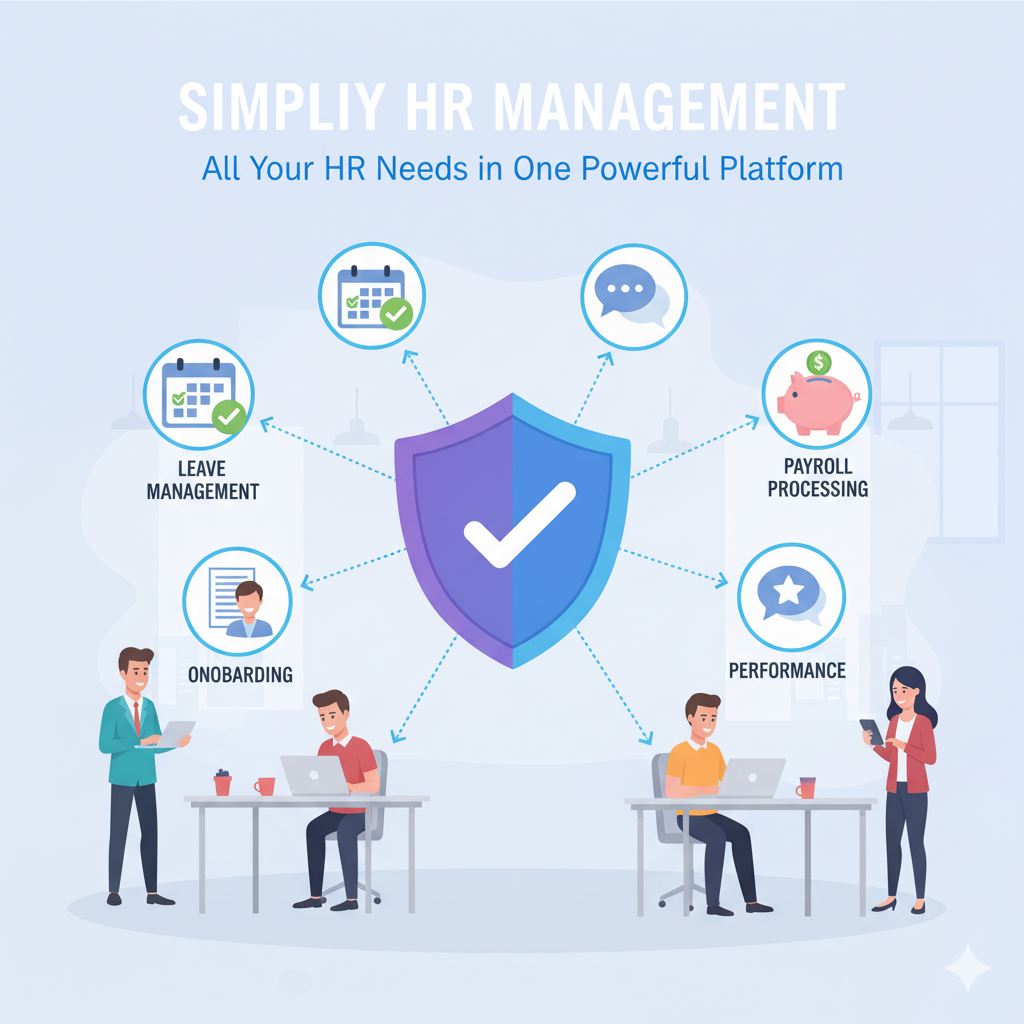Managing human resources in today’s fast-paced business environment can be complex and time-consuming. Between payroll processing, attendance tracking, recruitment, and employee engagement, HR teams often juggle multiple systems and endless spreadsheets.
But what if you could handle all your HR needs in one platform?
That’s the promise of modern all-in-one HR management systems—integrated digital solutions that automate, centralize, and simplify every HR function from hire to retire.
What Is an All-in-One HR Platform?
An all-in-one HR platform (also known as an HRIS or HR management system) is a unified software solution that brings together all essential HR functions in a single, user-friendly interface.
Instead of switching between separate tools for recruitment, payroll, and employee records, everything is managed in one place—saving time, improving accuracy, and enhancing data visibility.
Common features include:
- Employee data management
- Time and attendance tracking
- Payroll processing and benefits management
- Recruitment and onboarding tools
- Performance evaluation
- Employee self-service portal
- Analytics and reporting
Why Businesses Need an All-in-One HR Platform
In many organizations, HR operations are fragmented—different systems handle different tasks. This creates inefficiency, data duplication, and communication gaps.
An all-in-one platform solves these issues by connecting everything into a single, cohesive system.
- 1. Unified HR Processes
All HR data—from attendance logs to payroll records—is stored in one place, making it easy to access and manage.
- 2. Increased Efficiency
Automation eliminates manual data entry and repetitive tasks, freeing HR professionals to focus on strategy and people management.
- 3. Fewer Errors
Integrated systems reduce discrepancies between departments, ensuring payroll accuracy and compliance.
- 4. Data-Driven Insights
Built-in analytics help HR leaders make informed decisions about performance, headcount, and employee engagement.
- 5. Better Employee Experience
With self-service features, employees can file leaves, check payslips, and update personal information instantly—anytime, anywhere.
Key HR Functions Simplified by One Platform
- Attendance and Timekeeping
Track employee attendance automatically through biometric or online log-ins. Real-time data syncs directly to payroll, minimizing disputes and delays.
- Payroll Processing
Automate salary computation, tax deductions, and government contributions accurately—ensuring timely, error-free payroll every cycle.
- Recruitment and Onboarding
Streamline hiring with digital recruitment tools. Manage job postings, track applicants, and onboard new hires smoothly through integrated workflows.
- Performance Management
Evaluate employee performance with structured KPIs, digital appraisals, and automated feedback collection—improving transparency and fairness.
- Employee Records Management
Maintain complete, secure digital records for each employee—eliminating paper clutter and ensuring data privacy compliance.
Benefits of Using an All-in-One HR Platform
Implementing a centralized HR system delivers long-term advantages for any business:
- Time Savings: Automate repetitive HR processes.
- Cost Efficiency: Eliminate multiple subscriptions for different tools.
- Scalability: Easily adapt as your workforce grows.
- Accuracy: Minimize manual errors in payroll and recordkeeping.
- Transparency: Employees and managers access real-time information anytime.
With these benefits, organizations not only streamline HR operations but also create a more productive and engaged workforce.
How to Choose the Right HR Platform
When selecting the best all-in-one HR solution, look for these key features:
- Comprehensive Modules: Payroll, attendance, performance, and recruitment should all be included.
- Ease of Use: The platform should be intuitive and user-friendly.
- Integration Capability: Ensure it can connect with accounting, ERP, or government compliance systems.
- Data Security: Verify strong encryption and role-based access controls.
- Local Compliance: Choose a system tailored to your country’s HR and labor laws.
The Future of HR: Automation and Integration
- As organizations embrace digital transformation, HR automation and integration are becoming the new standard.
- All-in-one HR platforms enable businesses to work smarter—not harder—by combining every HR process into one connected ecosystem.
They empower HR leaders to shift their focus from administrative tasks to employee development, engagement, and strategic growth.
Conclusion
In a world where efficiency and accuracy are essential, managing all HR tasks in one platform is no longer a luxury—it’s a necessity.
An all-in-one HR platform brings everything together: recruitment, attendance, payroll, performance, and employee engagement. The result?
A smarter, faster, and more connected HR department that drives business success.
If your goal is to simplify HR management, start with one powerful platform that truly does it all.




